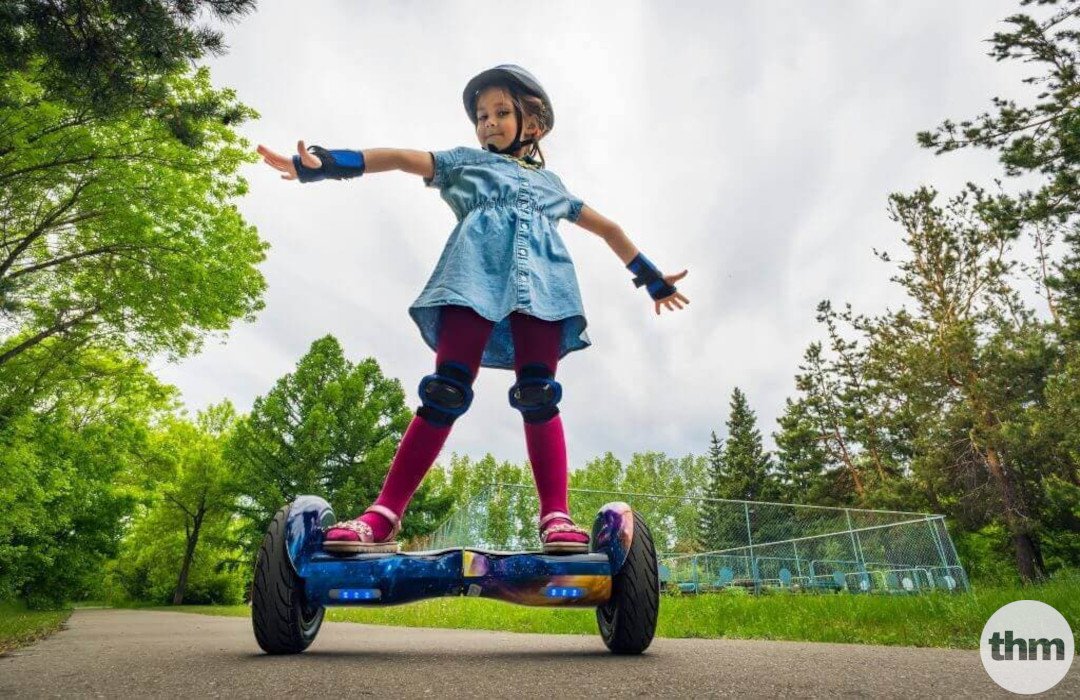
Hoverboard Safety Guide
This page contains affiliate links for which we may be compensated
Last updated: July, 2024
Hoverboards, also known as self-balancing scooters, have become increasingly popular in recent years. These futuristic devices provide a fun and convenient way to travel short distances, but they also come with some safety concerns. In this hoverboard safety guide, we’ll explore essential safety tips and guidelines to help you enjoy your hoverboard safely and prevent accidents.
You can also view our post on how to ride a hoverboard if your child struggling to get the hang of it.
Hoverboard Safety Tips
Before you embark on your hoverboarding adventure, it’s essential to familiarize yourself with safety guidelines and best practices. Here are some crucial hoverboard safety tips to ensure you stay injury-free and have a great time on your self-balancing scooter:
Select a Quality Hoverboard
Choosing a reputable and high-quality hoverboard is the first step in ensuring your safety. Opt for a brand that complies with industry safety standards and has positive customer reviews. Avoid purchasing cheap knock-offs that may compromise safety.
Wear Appropriate Safety Gear
Protective gear is a must when riding a hoverboard. Always wear the following safety equipment:
Helmet: Protect your head with a certified safety helmet designed for skateboarding or biking.
Knee and Elbow Pads: These provide additional protection for your joints in case of a fall.
Wrist Guards: These can help prevent wrist injuries in the event of a tumble.
Master Balancing and Mounting
Before taking your hoverboard for a spin, practice mounting and dismounting. Ensure you have a stable and firm stance before attempting to move. Keep your weight centered over the hoverboard to maintain balance.
Start Slowly and Progress Gradually
If you’re a beginner, start with slow speeds and smooth surfaces. As you gain confidence and proficiency, you can gradually increase your speed and tackle more challenging terrains.
Avoid Crowded Areas
Stick to less crowded paths and avoid riding in congested areas. This will reduce the risk of collisions and make your ride more enjoyable.
Be Mindful of Pedestrians
When sharing paths with pedestrians, always yield the right of way and be considerate. Alert them with a friendly greeting or a bell to avoid startling them.
Stay on Appropriate Terrain
Hoverboards are designed for smooth and even surfaces. Avoid rough terrains, gravel, or uneven pavement, as this can cause the hoverboard to lose balance and you to lose control.
Watch Your Speed
Don’t push the hoverboard to its maximum speed, especially when you’re just starting out. Maintain a safe and comfortable speed that allows you to react quickly to unexpected obstacles.
Keep an Eye on Battery Life
Monitor your hoverboard’s battery level. Low battery can affect performance and lead to sudden shutdowns. It’s best to recharge your hoverboard regularly to ensure a consistent and safe ride.
Habit-Worthy Practices
Incorporating safety practices into your daily routine is essential for a risk-free hoverboarding experience. Make these habits a part of your hoverboard journey:
Regular Maintenance
Just like any other mode of transportation, your hoverboard requires regular maintenance. Check the tires, motors, and any other mechanical components for wear and tear. Replace or repair any damaged parts promptly to ensure optimal performance.
Stay Informed
Stay up-to-date with the latest information and safety recommendations related to hoverboards. Keep an eye on the manufacturer’s website and subscribe to relevant newsletters or forums to receive important updates and recalls.
Respect Local Regulations
Familiarize yourself with local regulations and laws regarding hoverboard use. Some areas may have specific rules governing where and how you can ride your hoverboard. Adhering to these regulations not only keeps you safe but also avoids potential legal issues.
Be a Role Model
If you’re a parent or guardian responsible for a child’s hoverboarding experience, set a good example. Show them the importance of safety by wearing the appropriate gear and following the rules.
Plan Your Routes
Before heading out, plan your routes to avoid unexpected obstacles or challenges. This helps you stay aware of the terrain and the type of environment you’ll be navigating.
Regularly Charge Your Battery
Make it a habit to charge your hoverboard after each use, ensuring that it’s always ready when you want to ride. This practice minimizes the risk of running out of battery power mid-ride.